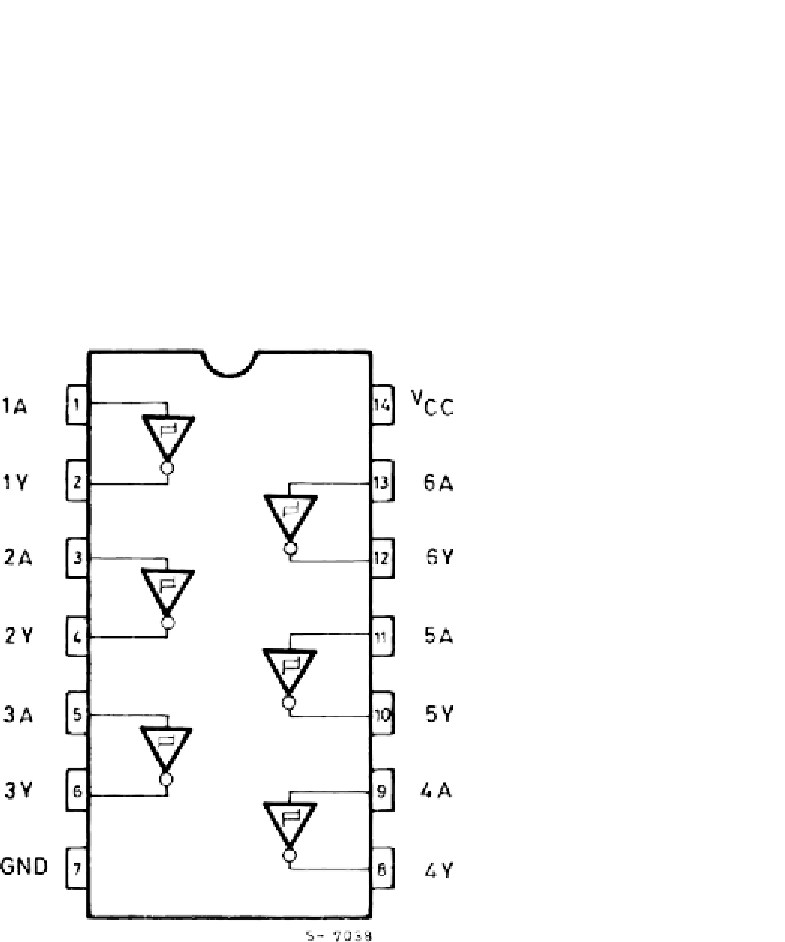Hardware Reference
In-Depth Information
The RC circuit that you just created will make a “curved” input signal to
the Arduino's I/O pin. Our interrupt is looking for an edge, which is detected
when a shift from high to low or from low to high occurs at a certain speed.
The “sharpness” of this edge is called the
hysteresis
of the signal edge, and it
might not be sharp enough with the smoothing caused by the capacitor. You
can increase the sharpness of this falling signal with a Schmitt trigger.
Schmitt
triggers
are integrated circuits (ICs) that create a sharp edge when the input
signal surpasses a certain threshold. The output from the trigger can then be
fed right into the Arduino's I/O pin. In this case, you use an inverting Schmitt
trigger, the 74HC14 IC. This chip has six separate inverting Schmitt triggers in
it, but you use only one. Inspect the datasheet image of the IC in Figure 12-5.
Figure 12-5:
Inverting Schmitt trigger pin-out

Search WWH ::

Custom Search